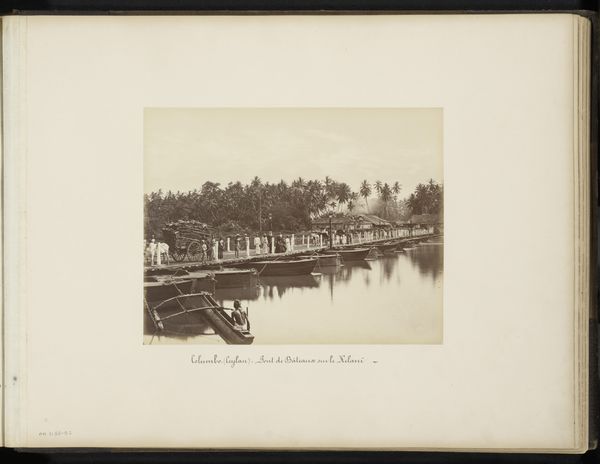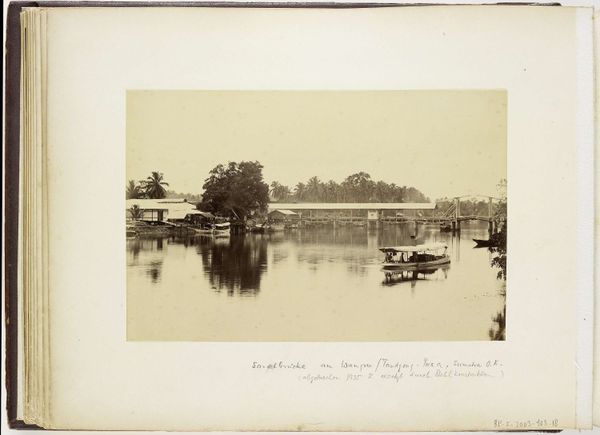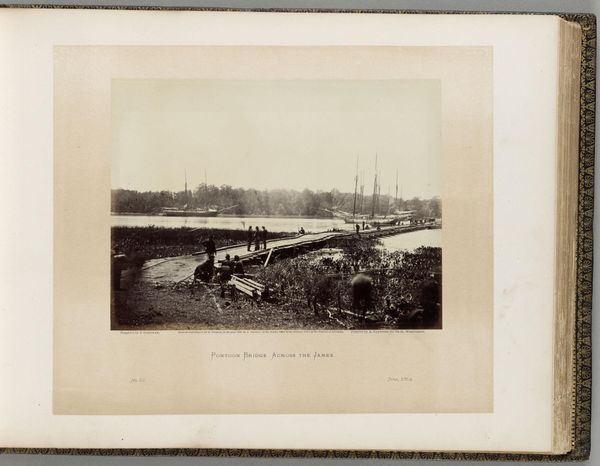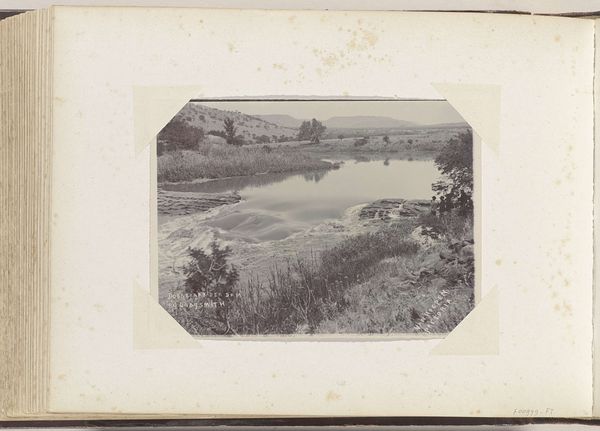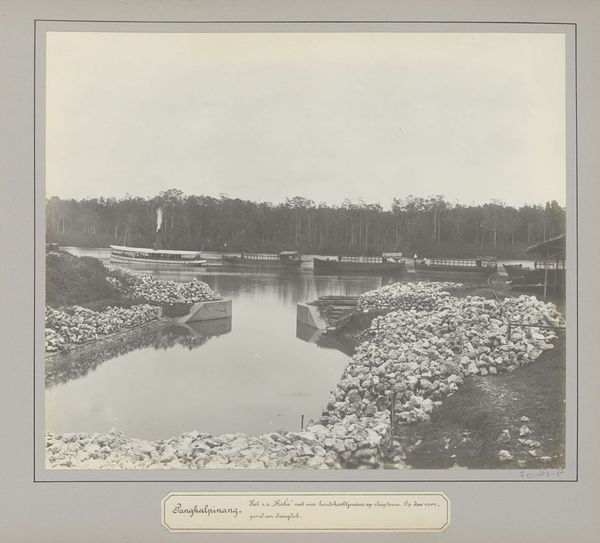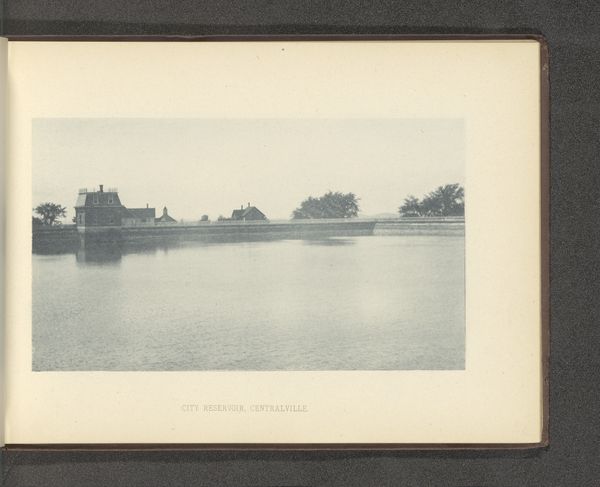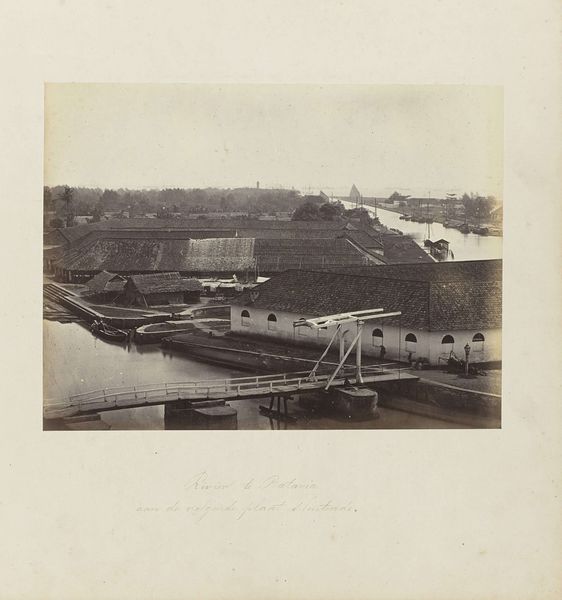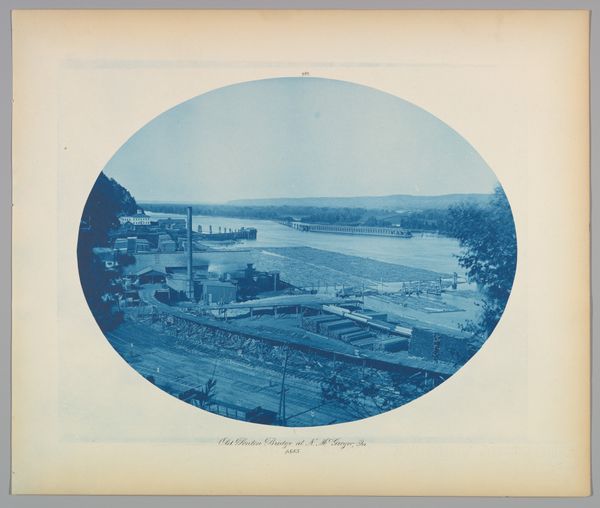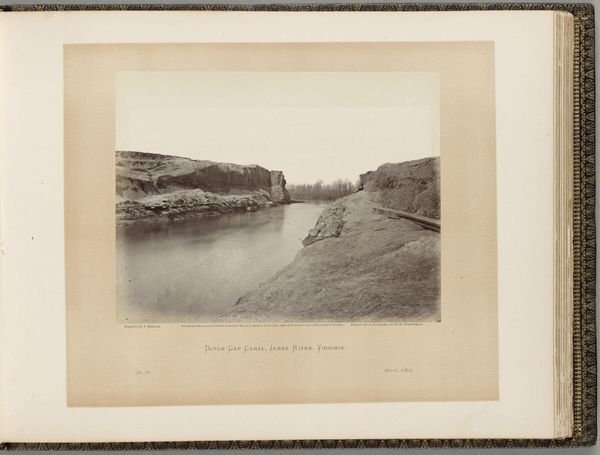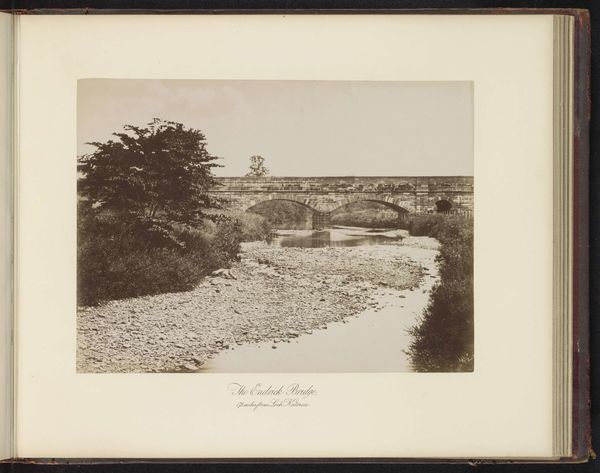
Brug over de Toentang / Aan wederzijde de spoorwegdam en over de rivier de tijdelijke noodbrug 1867 - 1868
0:00
0:00
photography, albumen-print
#
landscape
#
photography
#
orientalism
#
albumen-print
Dimensions: height 194 mm, width 242 mm, height 305 mm, width 450 mm
Copyright: Rijks Museum: Open Domain
Editor: Here we have "Bridge over the Toentang/ Railway dam on either side and temporary emergency bridge over the river," taken sometime between 1867 and 1868 by Woodbury & Page, an albumen print. It feels almost like a sketch. What strikes you most about its composition? Curator: Immediately, I am drawn to the photograph's tonality. The limited range, the subtle gradations from light to dark, it constructs a somber mood. The eye is led across the horizontal plane by the bridge itself, dissecting the composition, but the dark masses of the embankments, framing the image, confine that movement, creating a sense of visual tension. How do you perceive the bridge's function within the overall structure? Editor: I guess it's the main subject and divides the photograph. But the banks and surrounding land seem heavy, permanent. The bridge looks delicate, and truly, temporary. Curator: Precisely. Observe how the bridge, a relatively thin line, is juxtaposed against the bulk of the river and embankments. This visual disparity speaks to the contrast between human intervention and the forces of nature. Furthermore, the subtle tonal variations, characteristic of the albumen print, render texture and depth, providing an almost tactile quality to the landscape. Editor: That’s interesting. I was so caught up in trying to place the scene historically that I hadn't thought about how the formal aspects contribute to its meaning. I noticed it was labeled with Orientalism, how does that tie in here? Curator: Labels can mislead. Focusing on the work's materiality and construction first avoids such traps. Consider how the relationship between the photographic medium and its subject influences its interpretation. This tension is inherent in the photograph's visual language. Editor: That's a great point; I learned to look at how all these elements work together to create meaning rather than getting stuck on one aspect. Thank you.
Comments
No comments
Be the first to comment and join the conversation on the ultimate creative platform.
